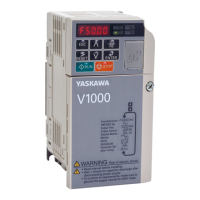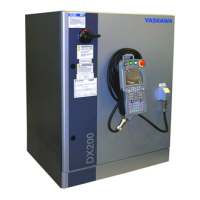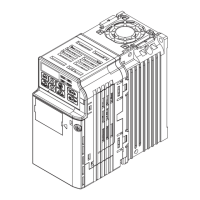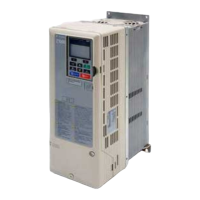6.8 Diagnosing and Resetting Faults
YASKAWA ELECTRIC SIEP C710606 44B YASKAWA AC Drive T1000V Technical Manual 269
6.8 Diagnosing and Resetting Faults
When a fault occurs and the drive stops, follow the instructions below to remove whatever conditions triggered the fault,
then restart the drive.
◆ Fault Occurs Simultaneously with Power Loss
WARNING! Electrical Shock Hazard. Ensure there are no short circuits between the main circuit terminals (R/L1, S/L2, and T/L3) or
between the ground and main circuit terminals before restarting the drive. Failure to comply may result in serious injury or death and
will cause damage to equipment.
1. Turn on the drive input power.
2. Use monitor parameters U2- to display data on the operating status of the drive just before the fault
occurred.
3. Remove the cause of the fault and reset.
Note: To find out what faults were triggered, check U2-02 (Fault History). Information on drive status when the fault occurred such as
the frequency, current and voltage, can be found in U2-03 through U2-17. Refer to Viewing Fault Trace Data After Fault on
page 269 for information on how to view fault trace data.
Note: When the fault continues to be displayed after cycling power, remove the cause of the fault and reset.
◆ If the Drive Still has Power After a Fault Occurs
1. Look at the LED operator for information on the fault that occurred.
2. Refer to Fault Displays, Causes, and Possible Solutions on page 243
3. Reset the fault. Refer to Fault Reset Methods on page 270.
◆ Viewing Fault Trace Data After Fault
Step Display/Result
1. Turn on the drive input power. The first screen displays.
2.
Press until the monitor screen is displayed.
3.
Press to display the parameter setting screen.
4.
Press and > until U2-02 (Fault History) is
displayed.
5.
Press to view the previous fault (here, EF3).
6.
Press to view drive status information when fault
occurred.
7.
Parameters U2-03 through U2-17 help determine cause of
fault.
STOP
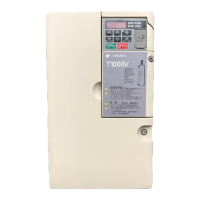
